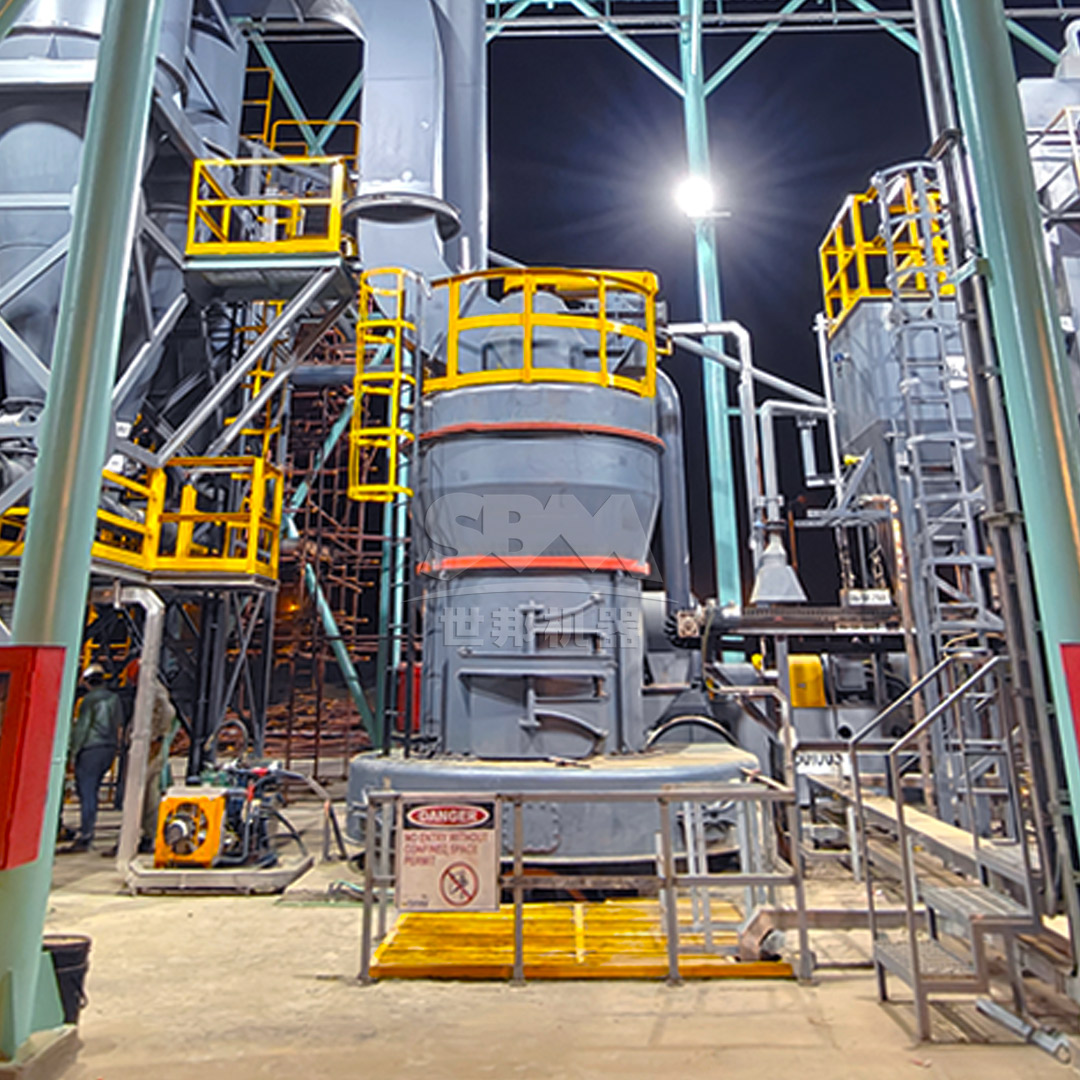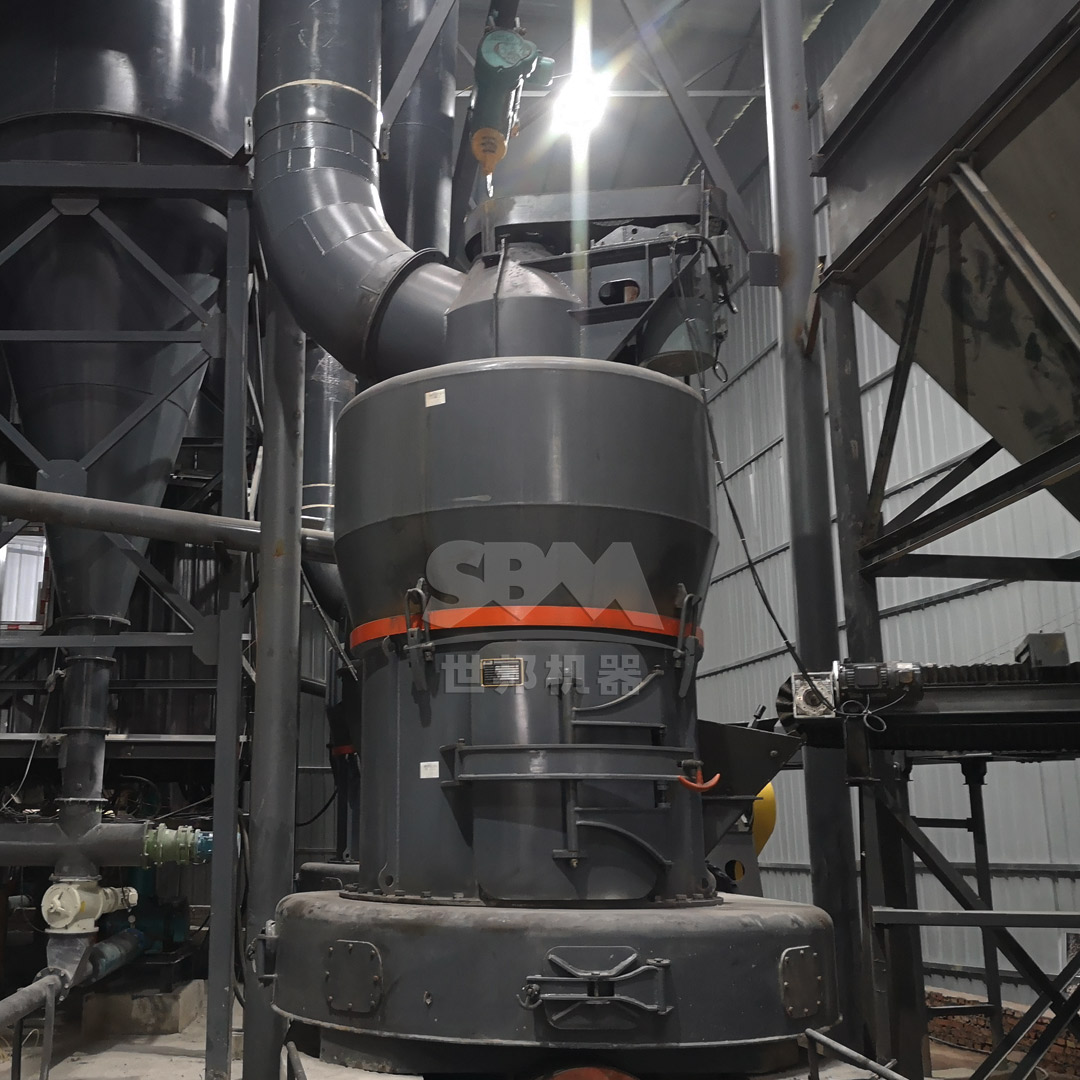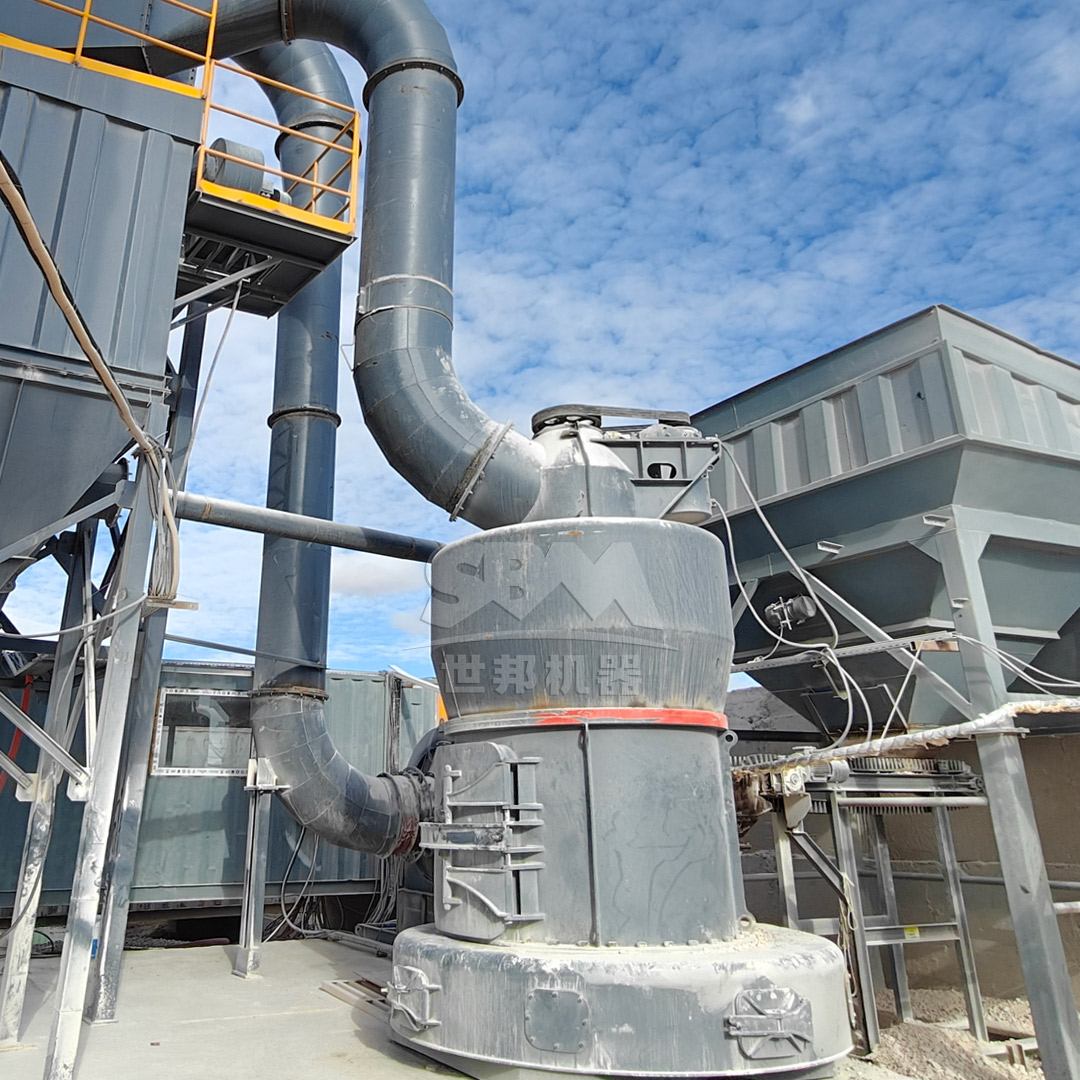The global push for sustainable industrial practices has placed energy efficiency at the forefront of mineral processing plant design. Calcite grinding, a fundamental process in industries ranging from plastics and paints to construction and pharmaceuticals, is traditionally energy-intensive. This article explores the critical role of advanced roller mill technology in developing energy-efficient calcite grinding plants, focusing on solutions that significantly reduce power consumption while maintaining high product quality and operational reliability.
Traditional calcite grinding systems, particularly ball mills and early-generation Raymond mills, consume substantial amounts of power—often representing 50-70% of a plant’s total energy usage. The inefficiency stems from several factors: excessive heat generation, inadequate classification leading to over-grinding, mechanical losses in transmission systems, and poor airflow management. With energy costs rising and environmental regulations tightening, operators face increasing pressure to adopt more efficient technologies.
Modern roller mills address these challenges through innovative engineering solutions that optimize every aspect of the grinding process. By focusing on precise particle size control, reduced friction, intelligent material handling, and optimized airflow dynamics, these systems can achieve remarkable energy savings while often improving product quality and production rates.
| Factor | Impact on Energy Consumption | Traditional Mills | Modern Roller Mills |
|---|---|---|---|
| Over-grinding | High – unnecessary particle reduction | Significant issue | Minimal through precision classification |
| Mechanical transmission | Medium – friction and heat losses | Gear systems with 85-90% efficiency | Direct drive or high-efficiency gear systems (95-98%) |
| Airflow resistance | High – fan power requirements | Poor duct design, high pressure drops | Optimized aerodynamic profiles, reduced resistance |
| Material transport | Medium – conveying and lifting power | Multiple separate systems | Integrated vertical design minimizes transport |
| Heat generation | Medium – cooling requirements | Significant heat requiring cooling | Reduced friction lowers heat generation |
Modern roller mills represent a quantum leap in grinding technology, incorporating numerous innovations that collectively deliver exceptional energy efficiency. Unlike impact-based systems that rely on violent particle collisions, roller mills utilize controlled compression forces that inherently consume less energy per ton of product. The fundamental advantage lies in the directed application of energy specifically for particle size reduction rather than wasting energy as heat, noise, or vibration.
Several technological advancements characterize energy-efficient roller mills: precision grinding elements with optimized profiles that maximize pressure efficiency; advanced classification systems that prevent over-grinding; intelligent control systems that adapt to material variations; and integrated designs that minimize material handling between process stages. These features work synergistically to reduce power consumption while maintaining consistent product quality.

For operations requiring ultrafine calcite powders (325-2500 mesh), our SCM Ultrafine Mill represents the pinnacle of energy-efficient design. This system achieves remarkable energy savings of up to 30% compared to conventional jet mills while doubling production capacity. The mill’s intelligent control system automatically monitors and adjusts operational parameters to maintain optimal成品粒度with minimal energy input.
The SCM series features a vertical turbine classifier that provides precise particle size切割without coarse powder contamination. Its unique grinding chamber design eliminates traditional bearing arrangements, reducing friction losses and maintenance requirements. With special material roller and ring sets that last several times longer than conventional components, the mill ensures consistent performance while minimizing downtime for component replacement.
Environmental performance is equally impressive, with pulse dust collection efficiency exceeding international standards and noise levels maintained below 75dB through comprehensive acoustic insulation. The SCM800 to SCM1680 models offer capacities from 0.5 to 25 tons per hour, making them suitable for various production requirements while maintaining exceptional energy efficiency across the size range.
For operations producing calcite powders in the 30-325 mesh range, our MTW Series Trapezium Mill delivers outstanding energy efficiency through multiple innovative features. The mill’s curved air channel design significantly reduces airflow resistance, lowering fan power requirements by minimizing energy losses during material transport. Its combined shovel blade design reduces wear and maintenance costs while extending roller life through optimized geometry.
The MTW series employs an integrated conical gear transmission system that achieves 98% transmission efficiency—far superior to traditional gear systems. This efficient power transfer, combined with wear-resistant volute structure and obstruction-free design, reduces overall energy consumption while maintaining reliable operation. The mill’s advanced grinding mechanics ensure uniform pressure distribution across the grinding zone, maximizing size reduction efficiency while minimizing power input.
Available in multiple configurations from MTW110 to MRN218, these mills offer capacities from 3 to 45 tons per hour with proportional power requirements that maintain high efficiency across the production range. The patented internal oil lubrication system and international standard pulse dust collection technology further enhance the mill’s operational economy and environmental performance.

Beyond the mill itself, complete system design plays a crucial role in optimizing energy efficiency. Modern calcite grinding plants integrate multiple components—feeding systems, grinding mills, classifiers, dust collectors, and product handling—into a cohesive system that minimizes energy losses at every stage. Intelligent control systems monitor and adjust operations in real-time, responding to material variations and production requirements to maintain optimal efficiency.
Key integration strategies include: vertical arrangement that reduces material lifting requirements; optimized duct design with smooth transitions and minimal resistance; heat recovery systems that capture and reuse process heat; and advanced control algorithms that balance production rate with energy consumption. These integrated approaches can yield additional energy savings of 15-25% beyond what the mill itself achieves.
Proper system sizing is equally critical—oversized equipment operates inefficiently at partial load, while undersized systems require excessive energy to meet production targets. Modern design approaches utilize sophisticated simulation tools to right-size all components for the specific application, ensuring optimal efficiency under actual operating conditions.
| Mill Type | Power Consumption (kWh/t) | Typical Efficiency (%) | Notes |
|---|---|---|---|
| Traditional Ball Mill | 45-60 | 35-45 | High wear, significant heat loss |
| Raymond Mill (Old) | 35-50 | 45-55 | Better than ball mill but still inefficient |
| Jet Mill | 55-80 | 30-40 | Very fine product but high energy cost |
| SCM Ultrafine Mill | 25-40 | 65-75 | Excellent for fine and ultrafine grinding |
| MTW Trapezium Mill | 20-35 | 70-80 | Optimal for intermediate fineness ranges |
Maximizing energy efficiency requires not only proper equipment selection but also optimized operational practices. Regular maintenance ensures mills operate at peak efficiency—worn grinding elements increase power consumption significantly while reducing product quality. Monitoring key parameters such as grinding pressure, classifier speed, and airflow rates allows operators to identify efficiency improvements and address issues before they impact energy consumption.
Material characteristics significantly influence grinding efficiency. Consistent feed size and moisture content prevent operational fluctuations that reduce efficiency. Pre-drying high-moisture materials, when economically justified, can reduce grinding energy requirements substantially. Similarly, optimizing classifier settings to produce the exact required product size—without over-grinding—represents one of the simplest ways to reduce energy consumption.
Many modern mills include energy monitoring systems that track power consumption in real-time, allowing operators to identify inefficient operation and implement corrective measures. These systems often include automated optimization routines that adjust operational parameters to maintain peak efficiency as conditions change throughout production campaigns.

The economic advantages of energy-efficient calcite grinding extend far beyond reduced electricity bills. Lower energy consumption decreases greenhouse gas emissions, helping plants meet environmental regulations and sustainability targets. Reduced mechanical losses translate to less heat generation, lowering cooling requirements and further reducing energy costs. The superior wear characteristics of modern mills decrease maintenance requirements and downtime, increasing overall equipment effectiveness.
For a typical medium-sized calcite processing plant producing 100,000 tons annually, upgrading from traditional technology to modern roller mills can yield annual energy savings exceeding 2,000,000 kWh—equivalent to approximately $200,000 in electricity costs and a reduction of 1,400 tons of CO2 emissions. The return on investment for such upgrades typically ranges from 1-3 years, making them economically attractive even without considering environmental benefits.
Additionally, the consistent product quality achieved by modern mills often commands premium prices in specialty markets, further enhancing economic returns. The ability to precisely control particle size distribution opens opportunities in high-value applications where consistent performance is critical.
The evolution of energy-efficient grinding technology continues, with several promising developments on the horizon. Advanced materials for grinding elements promise even longer service life and reduced friction losses. Artificial intelligence and machine learning applications enable predictive optimization of grinding parameters based on real-time material characterization. Hybrid systems that combine different grinding principles may offer step-change improvements in efficiency for specific applications.
Renewable energy integration represents another frontier—some operations are exploring direct coupling of grinding mills with solar or wind power sources, potentially eliminating grid energy requirements during favorable conditions. Energy storage systems can help smooth demand peaks, reducing maximum power requirements and associated charges.
As digitalization advances, remote monitoring and optimization services will become increasingly sophisticated, allowing expert intervention from anywhere in the world to maintain peak efficiency. These developments promise to further reduce the energy footprint of calcite processing while improving operational reliability and product quality.
The transition to energy-efficient calcite grinding represents both an economic imperative and an environmental responsibility. Modern roller mill technology, exemplified by our SCM Ultrafine Mill and MTW Series Trapezium Mill, offers substantial energy savings without compromising product quality or operational reliability. Through innovative design, intelligent control, and proper system integration, these advanced mills can reduce power consumption by 30-50% compared to traditional technologies.
Plant operators considering upgrades or new installations should prioritize energy efficiency in their equipment selection process. The combination of lower operating costs, reduced environmental impact, and improved product quality makes modern roller mills the clear choice for forward-thinking calcite processing operations. As technology continues to advance, even greater efficiency improvements will become available, further strengthening the business case for energy-efficient grinding solutions.